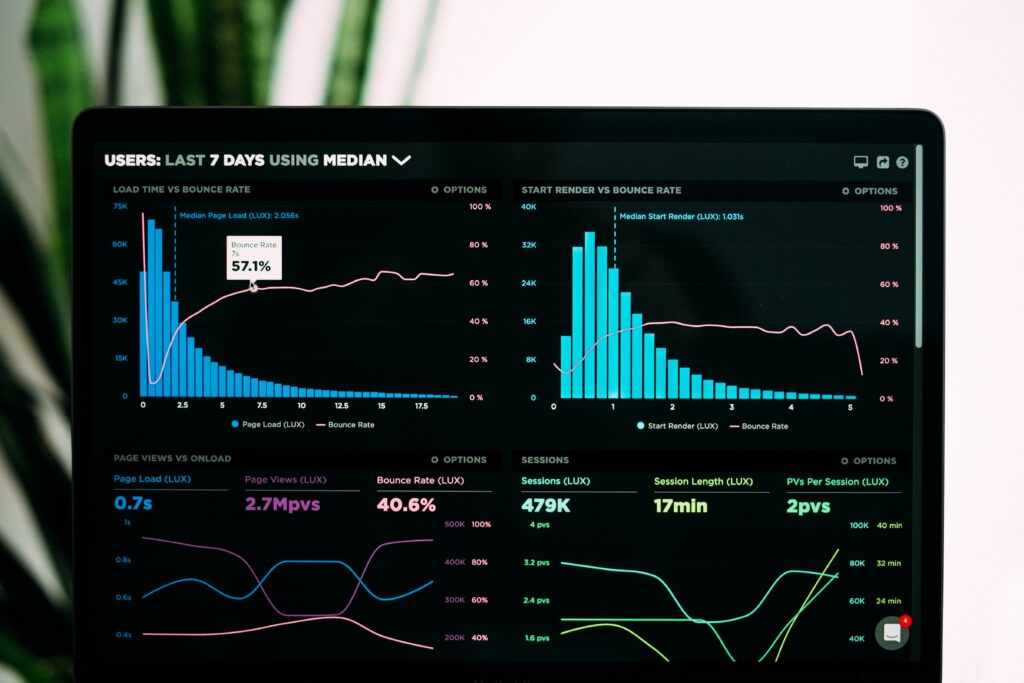In this article, we will explore the connection between mechanical measurement and data acquisition. You will learn about the role of data acquisition in obtaining accurate and reliable measurements in mechanical systems. We will also discuss the various methods and devices used for data acquisition in mechanical measurement. By the end of this article, you will have a clear understanding of how data acquisition enhances the accuracy and efficiency of mechanical measurements.
Introduction
In the world of engineering and manufacturing, accurate measurements play a crucial role in ensuring the quality and reliability of products. Mechanical measurement involves the use of various instruments and techniques to quantify physical parameters such as length, weight, pressure, and temperature. However, in today’s data-driven era, simply measuring physical quantities is no longer enough. The integration of data acquisition systems has become essential to enhance the accuracy and efficiency of mechanical measurements. So, let’s delve into the world of mechanical measurement and explore the importance of data acquisition in this field.
Understanding Data Acquisition
Definition of Data Acquisition
Data acquisition refers to the process of collecting and recording data from various sources or sensors, and converting it into a digital format that can be analyzed and utilized for further purposes. In the context of mechanical measurement, data acquisition systems enable the capture and analysis of measurement data with high precision and accuracy. These systems involve the use of specialized hardware and software to acquire, process, and store data from mechanical measurement devices.
Methods of Data Acquisition
Data acquisition in mechanical measurement can be achieved through different methods. One common method is direct connection, where the measurement device is physically connected to the data acquisition system. This can be done through various interfaces such as USB, Ethernet, or serial ports. Another method is wireless data acquisition, which eliminates the need for physical connections and enables measurements to be taken remotely.

Integration of Mechanical Measurement and Data Acquisition
Benefits of Using Data Acquisition in Mechanical Measurement
The integration of data acquisition with mechanical measurement brings numerous benefits. Firstly, it enhances the accuracy and precision of measurements. Data acquisition systems can capture and process measurements with high resolution and minimal errors, ensuring reliable and consistent data. This is particularly important in industries where even slight measurement variations can have significant consequences.
Secondly, data acquisition enables real-time monitoring and analysis of measurement data. By continuously acquiring and analyzing data as it is generated, engineers can identify trends, anomalies, and potential issues in real-time. This proactive approach allows for immediate corrective actions, reducing the risk of errors or failures.
Furthermore, data acquisition facilitates seamless data management. Measurement data can be stored, organized, and easily accessed for future reference or analysis. This not only improves efficiency but also enables traceability and auditability, which are vital in regulated industries.
Challenges in Integrating Data Acquisition with Mechanical Measurement
While the integration of data acquisition systems with mechanical measurement brings many advantages, it also presents certain challenges. One major challenge is calibration and verification. Ensuring accurate and consistent calibration of both the measurement devices and the data acquisition system is crucial. Regular calibration checks and validation procedures must be implemented to maintain measurement accuracy.
Compatibility and interoperability between different components of the data acquisition system can also be a challenge. As there are various sensors, transducers, signal conditioning modules, and data converters available in the market, ensuring seamless integration and communication among these components can be complex. Standardized interfaces and protocols play a crucial role in addressing this challenge.
Data security and privacy are additional concerns when it comes to data acquisition in mechanical measurement. As measurement data carries valuable information about products, processes, and potentially sensitive data, ensuring secure data storage, transmission, and access control becomes crucial. Implementing proper encryption, access controls, and data backup measures are essential to protect sensitive measurement data.
Types of Data Acquisition Systems
Overview of Data Acquisition Systems
There are various types of data acquisition systems available today, each designed for specific requirements and applications. In general, data acquisition systems consist of sensors or transducers, signal conditioning modules, data converters, and data storage components.
Different Types of Data Acquisition Systems
-
Standalone Data Acquisition Systems: These systems are designed as standalone units that can capture, process, and store measurement data independently. They are often used in field applications where portability and autonomy are required.
-
PC-Based Data Acquisition Systems: These systems utilize a personal computer as the central processing unit for data acquisition. They typically consist of interface cards or external modules that connect to the computer via standard interfaces such as USB or Ethernet.

Components of a Data Acquisition System
Sensors and Transducers
Sensors and transducers are critical components of a data acquisition system as they convert physical parameters into electrical signals that can be processed and analyzed. These components can include temperature sensors, pressure sensors, force sensors, accelerometers, and many more, depending on the specific measurement requirements.
Signal Conditioning
Signal conditioning modules are used to enhance and normalize the electrical signals received from sensors and transducers. They perform functions such as amplification, filtering, and isolation to ensure accurate measurement data is obtained.
Data Converters
Data converters are responsible for converting analog signals from sensors and transducers into digital format, which can be processed, stored, and analyzed by the data acquisition system. Analog-to-digital converters (ADCs) are commonly used for this purpose.
Data Storage
Data storage components, typically in the form of hard drives, solid-state drives, or cloud storage, are used to store the captured measurement data for further analysis and retrieval. The choice of data storage system depends on factors such as data volume, speed requirements, and data retention policies.
Applications of Data Acquisition in Mechanical Measurement
Quality Control in Manufacturing
Data acquisition systems play a critical role in ensuring quality control in manufacturing industries. By integrating measurement devices with data acquisition systems, manufacturers can monitor and control various production parameters in real-time, such as dimensional accuracy, material properties, and environmental conditions. This allows for timely identification of production defects or deviations, enabling corrective actions to be taken promptly.
Structural Testing
In structural testing, data acquisition systems are used to measure and record various parameters such as strain, load, vibration, and displacement. By capturing and analyzing these measurements, engineers can assess the structural integrity of components, detect potential failures, and optimize designs for enhanced performance and durability.
Monitoring and Control Systems
Data acquisition is also crucial for monitoring and control systems in various industries. For example, in the energy sector, data acquisition systems enable real-time monitoring of power generation and distribution systems, ensuring efficient and reliable operation. Similarly, in the transportation sector, data acquisition plays a vital role in monitoring vehicle performance, optimizing fuel efficiency, and enhancing passenger safety.

Advancements in Data Acquisition Technology
Wireless Data Acquisition
Wireless data acquisition systems have emerged as a significant advancement in this field. These systems eliminate the need for physical connections, enabling measurements to be taken remotely, even in harsh or inaccessible environments. Wireless data acquisition enables greater flexibility, scalability, and ease of installation in various applications.
Cloud-based Data Acquisition
Cloud-based data acquisition systems leverage the power of cloud computing to store, analyze, and share measurement data. This enables real-time collaboration and accessibility, as data can be securely accessed from anywhere, anytime, and shared with multiple stakeholders. Cloud-based systems also provide scalability and cost-effectiveness by eliminating the need for local data storage infrastructure.
Real-time Data Acquisition
Real-time data acquisition systems enable instantaneous monitoring and analysis of measurement data, providing immediate feedback and control. This is particularly beneficial in time-sensitive applications, such as process control or safety-critical systems, where real-time decisions and actions are essential.
Benefits of Data Acquisition in Mechanical Measurement
Increased Accuracy and Precision
The integration of data acquisition in mechanical measurement improves the overall accuracy and precision of measurements. By eliminating manual data entry and automating the data acquisition process, the risk of human errors is reduced. Moreover, data acquisition systems capture measurements with high resolution and minimal noise, ensuring reliable and consistent data.
Improved Efficiency and Productivity
Data acquisition systems automate the measurement process, eliminating the need for manual data collection and entry. This not only saves time but also reduces the risk of errors associated with manual data handling. The real-time monitoring and analysis capabilities of data acquisition systems also enable proactive decision-making and timely corrective actions, further enhancing efficiency and productivity.
Enhanced Data Analysis
Data acquisition systems provide rich and detailed measurement data that can be analyzed and utilized for in-depth analysis. Advanced data analysis techniques such as statistical analysis, machine learning, and artificial intelligence can be applied to gain insights, identify patterns, and optimize processes. These insights can lead to improved product designs, process optimizations, and enhanced overall performance.
Challenges of Data Acquisition in Mechanical Measurement
Calibration and Verification
Accurate calibration and regular verification of both measurement devices and data acquisition systems are essential to maintain measurement accuracy. Calibration procedures must be performed periodically to ensure consistency and reliability in measurements. Verification processes also need to be established to validate the accuracy and precision of measurement results.
Compatibility and Interoperability
Integration and communication among different components of a data acquisition system can be challenging due to the wide range of available sensors, transducers, and data acquisition modules. Ensuring compatibility and interoperability is crucial to seamlessly integrate these components and achieve reliable data acquisition.
Data Security and Privacy
As measurement data can contain sensitive information about products, processes, or possibly proprietary data, ensuring data security and privacy is of utmost importance. Appropriate measures should be in place to secure data storage, transmission, access control, and backup. Encryption, authentication, and data anonymization techniques can be utilized to safeguard measurement data from unauthorized access or exploitation.
Conclusion
In conclusion, data acquisition plays a crucial role in enhancing the accuracy, precision, and efficiency of mechanical measurement. The integration of data acquisition systems with measurement devices enables real-time monitoring, seamless data management, and improved decision-making. Advancements such as wireless data acquisition, cloud-based systems, and real-time monitoring further enhance the capabilities and possibilities in this field. As the importance of data-driven insights and optimization continues to grow, the integration of data acquisition with mechanical measurement will play an increasingly vital role in various industries. So, embrace the power of data acquisition and unlock the true potential of mechanical measurement!

